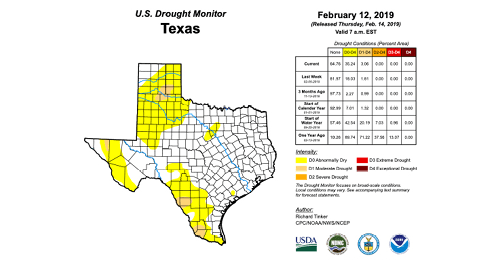SUMMARY:
-
El Niño is here! El Niño is here!
-
Abnormally dry conditions have spread across much of West, Far West, and South Texas.
-
Precipitation in the headwaters of the Rio Grande on Colorado continues to remain at 25 to 50 percent of normal.
The weather sure has been schizophrenic this past month. Austin started last week with freezing temperatures and ended with a record high of 91. Before that, we learned about graupel (when supercooled water freezes onto snowflakes) after being gently pelleted by the stuff. On any given morning, I’m not sure if I should head out with a winter coat or swimming trunks.
Precipitation over the past 30 days has ranged from nothing in small parts of West and Far West Texas to almost 6 inches in East Texas. Most of the state received less than normal amounts of precipitation with much of the High Plains receiving less than 25 percent of normal during this time period.

The amount of drought in Texas (D1-D4) over the past month increased from 0.8 to 3.1 percent with patches of moderate drought appearing in the Panhandle, the Trans-Pecos, and the Lower Rio Grande Valley and now in south Texas (Figure 2a). Abnormally dry conditions or worse expanded across West Texas, the Trans-Pecos, and South Texas from 9.6 percent a month ago to 35 percent (Figure 2b).


The 90-day precipitation as a percent of normal is showing deficits in large parts of the state in the High Plains, the Trans Pecos, and much of the Rio Grande Valley (Figure 3).

The North American Drought Monitor for the end of January shows extreme to exceptional drought in the headwaters of the Rio Grande, which doesn’t bode well for reservoir levels in Elephant Butte (Figure 4a). Precipitation in the Rio Grande watershed in Colorado, the primary source of water for Elephant Butte Reservoir, continues to be than 50 percent, and in many areas less than 25 percent, of normal precipitation over the past 90 days (Figure 4b).
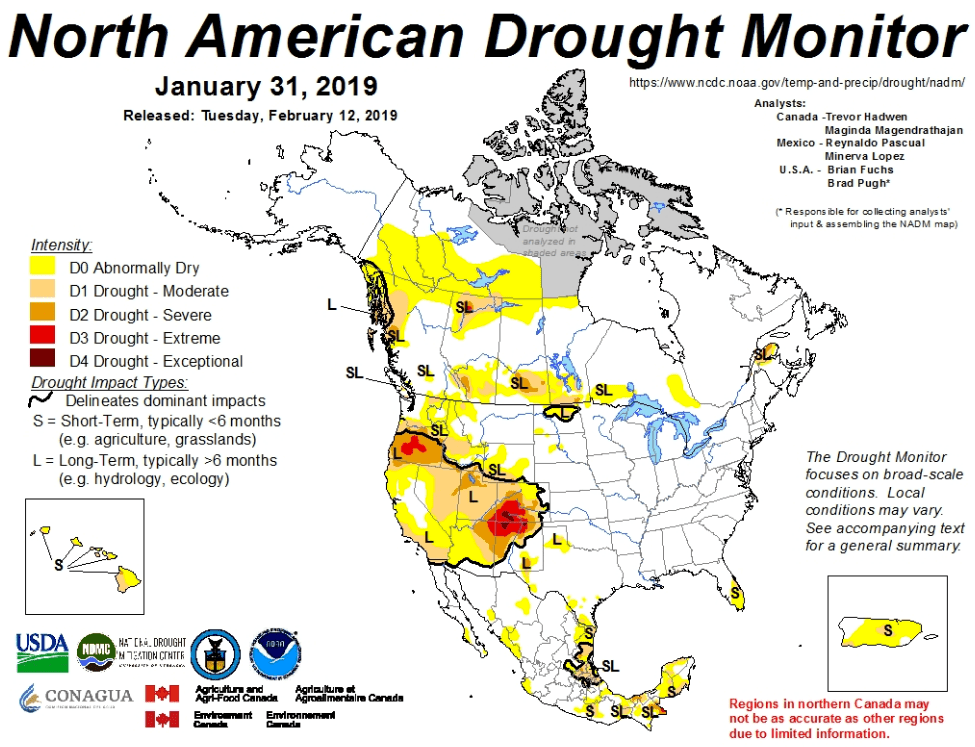
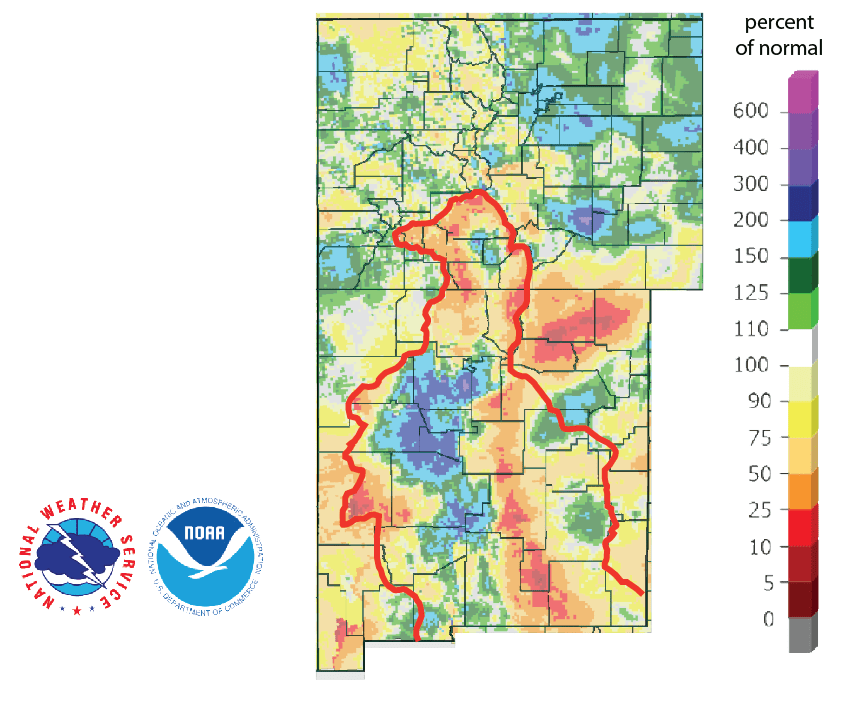
Statewide reservoir storage has been about 90 percent full since mid-November and is about 8 percentage points above normal for this time of year (Figure 5a). Percent full status for individual reservoirs this month (Figure 5b) is about the same as last month (Figure 5c).

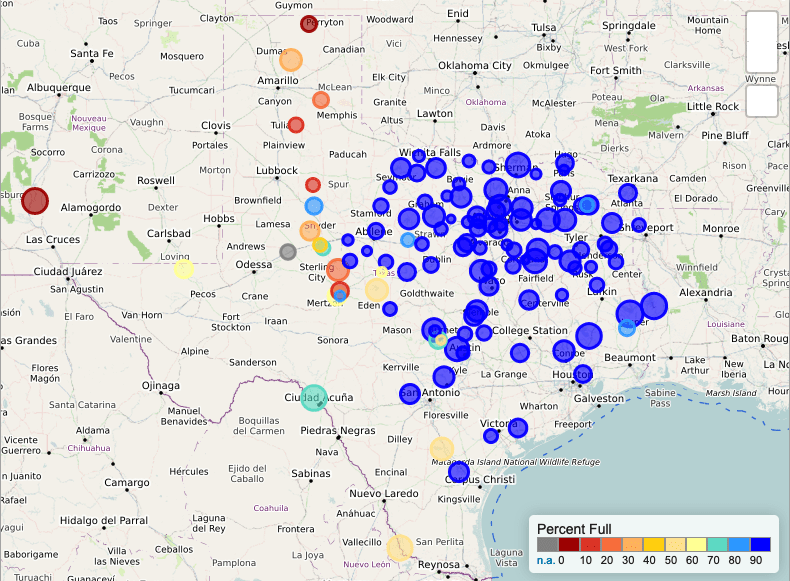
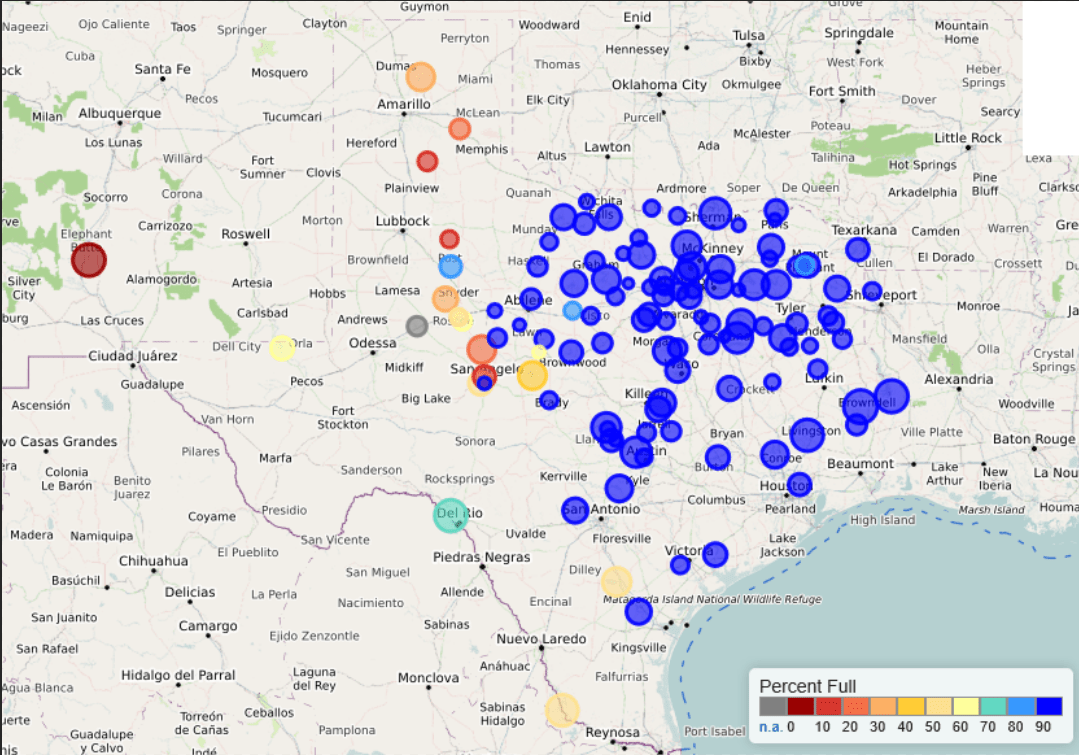
After sea surface temperatures achieved El Niño levels for the past several months, the warming finally coupled with the atmosphere placing us into an El Niño Advisory with about a 55 percent chance of weak El Niño conditions continuing through the spring (Figure 6). El Niños generally result in wetter-than-normal and cooler-than-normal conditions for Texas and act as a tropical storm suppressor. Given that this El Niño is weak and that we’re almost out of winter, it’s unlikely that this El Niño will have much affect on the state.

The U.S. Seasonal Drought Outlook through April 30, 2019, suggests drought improvements in southern Colorado, something that would be welcome for Elephant Butte Reservoir, and drought removal for Texas (Figure 7).

Author
Robert Mace,
Deputy Executive Director & Chief Water Policy Officer at The Meadows Center for Water and the Environment
Robert Mace is a Professor of Practice in the Department of Geography at Texas State University. Robert has over 30 years of experience in hydrology, hydrogeology, stakeholder processes, and water policy, mostly in Texas.

